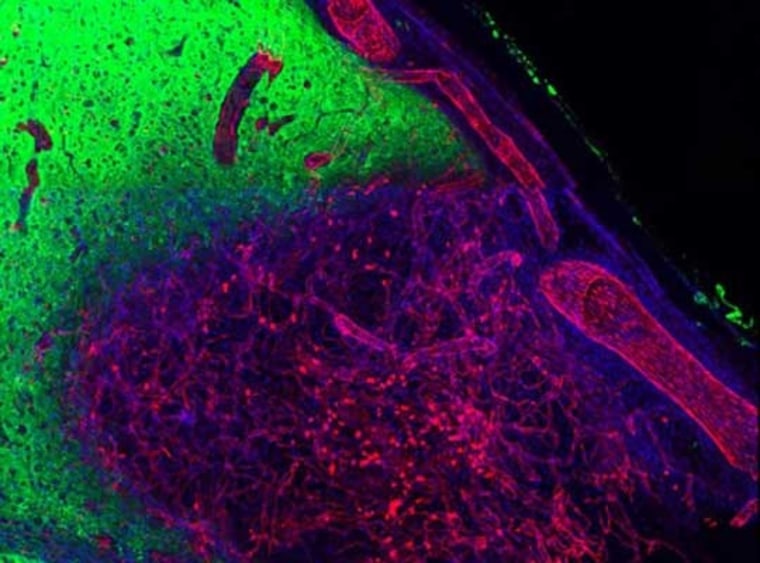Scrambled brains and broken bones can both be healed with a new nanoparticle-infused hydrogel.
Developed by scientists from Clemson University, the gel creates new blood vessels and later encourages the body's own stem cells to replace dead bone or brain cells.
Twelve weeks after a devastating brain injury some test rats had recovered almost all of their original muscle and sensory functions.
"The goal of this project is to encourage the neurological regeneration of damaged tissue," said Ning Zhang, a Clemson University scientist developing the hydrogel. "The functions controlled by the damaged regions will be lost permanently if not restored."
Zhang used a controlled cortical impactor, basically a small, pneumatic spear with a conch-shaped tip, to strike the rat's forehead, destroying most of the brain's cortex and some of the striatum. These are areas responsible for memory, learning, sensory information and muscle movements, among other functions.
For a human, that amount of brain damage would be roughly equivalent to being in a bad car crash.
Fluid quickly filled area around the head wound. The Clemson scientists drained the fluid and replaced it with a liquid cocktail of three different neural growth factors, each one encased in a different biodegradable nanoparticle.
Zhang wouldn't comment on the exact makeup of the nanoparticles, other than to say they can be produced from natural or synthetic materials, and they can be tuned to diograde depending on the needs of the scientists.
The body's temperature turns the liquid into a gelatin scaffold, spurring the creation of new blood vessels to feed the recovering organ.
Over the next three to four weeks the nanoparticles broke apart, releasing their contents.
The first growth factors find neural stem cells and prep them for travel. The second growth factor helps the stem cells travel to the injury site. The third and final growth factor turns the stem cells into new neurons and glial cells.
Twelve weeks after the injury the rats had regained almost all their original sensory and motor functions. Memory and learning also improved significantly when compared with traumatized but untreated rats.
A modified version of the hydrogel can heal devastating wounds to bone and cartilage as well.
Using rabbits instead of mice, Zhang and her colleagues removed three centimeters, or almost half, of a rabbit's femur bone. They then injected hydrogel, modified with drugs to encourage bone growth instead of brain growth, into the wound.
"Normally the bone would never heal" from that wound that severe," said Zhang.
"But in our studies the bone healed in a couple of weeks."
Whether it's mushy brains, broken bones or torn cartilidge, the nanoparticle-infused gel will only heal animal wounds for now. Five years of additional animal testing will be required before any human trials can begin, says Zhang.
If animal trials go well, and if human clinical trials go well, then the hydrogel could be used to treat humans with brain, bone, or other tissue damage.
Related stories
Matthew Tate, a doctor at the University of California San Francisco, agrees that years will likely pass before hyrogels like the one developed by Zhang is routinely used for brain injuries, but he is excited by the progress her group has made.
"Engineering a hydrogel to do what you want, and of which this is a good example, is a good advancement towards manipulating cells in the host brain for therapies that can help patients," said Tate.
"I think we are getting pretty close to translating this research into actual human patients."
